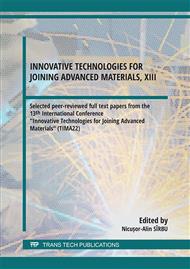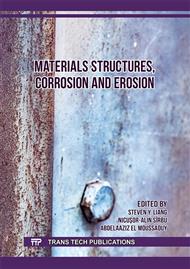[1]
https://www.britannica.com/science/aluminum
Google Scholar
[2]
L. Morar, E. Campean: Masini unelte cu comanda numerica, Editura U.T Press, Cluj-Napoca, Romania (2015)
Google Scholar
[3]
https://www.google.com/search?q=aluminium+alloy++pump&tbm=isch&ved= 2ahUKEwjsg5ifnor7AhXKReUKHWijC6UQ2-cCegQIABAA&oq=aluminium+alloy++pump&gs_lcp=CgNpbWcQA1CfCVifCWCfC2gAcAB4AIABvwGIAb4CkgEDMC4ymAEAoAEBqgELZ3dzLXdpei1pbWfAAQE&sclient=img&ei=T6BfY6ygIsqLlQfoxq6oCg&bih=664&biw=1536#imgrc=eXrZKOupWLgSQM
Google Scholar
[4]
https://www.indiamart.com/proddetail/ez-fan-impeller-20613615730.html
Google Scholar
[5]
https://www.amazon.de/-/en/Aluminium-Alloy-Vane-Propeller-Boots/dp/B01EZPAPK0
Google Scholar
[6]
***ISO EN AW-7075 http://highgrademetals.co.nz/Aluminium/Aluminium-7075/
Google Scholar
[7]
I. Bordeasu: Monograph of the Cavitation Erosion Research Laboratory of the Polytechnic University of Timisoara (1960-2020). Editura POLITEHNICA, ISBN 978-606-35-0371-9, Timisoara (2020)
Google Scholar
[8]
***Standard method of vibratory cavitation erosion test, ASTM, Standard G32-(2016)
Google Scholar
[9]
I. Mitelea: Materiale inginereşti, Editura Politehnica, Timişoara, Romania, (2009)
Google Scholar
[10]
I. Bordeasu, C. Ghera, D. Istrate, L. Salcianu, B. Ghiban, D. Bazavan, L.M. Micu L, D.C. Stroita, A. Suta, I. Tomoiaga, A.N. Luca: Resistance and Behavior to Cavitation Erosion of Semi-Finished Aluminum Alloy 5083, "HIDRAULICA" (No. 4/2021), pp.17-24
DOI: 10.3390/cryst12111538
Google Scholar
[11]
I. Bordeaşu: Eroziunea cavitaţională asupra materialelor utilizate în construcţia maşinilor hidraulice şi elicelor navale. Efecte de scară,, Timişoara, (1997)
Google Scholar
[12]
O. Oanca: Tehnici de optimizare a rezistenţei la eroziunea prin cavitaţie a unor aliaje CuAlNiFeMn destinate execuţiei elicelor navale, Teza de doctorat, Timișoara (2014)
Google Scholar
[13]
D. Istrate, B.G. Sbârcea, A.M. Demian, A.D. Buzatu, L. Salcianu, I. Bordeasu, L. M. Micu, C. Ghera, B. Florea and B. Ghiban Correlation between Mechanical Properties—Structural Characteristics and Cavitation Resistance of Cast Aluminum Alloy Type 5083, Crystals (2022)
DOI: 10.3390/cryst12111538
Google Scholar
[14]
I. Bordeasu, M.O. Popoviciu, I. Mitelea, V. Balasoiu, B. Ghiban, D. Tucu: Chemical and mechanical aspects of the cavitation phenomena, REVISTA DE CHIMIE, Volume 58, Issue 12, pp.1300-1304 (2007)
Google Scholar
[15]
I. Bordeasu, I. Mitelea, L. Salcianu, C.M. Craciunescu: Cavitation Erosion Mechanisms of Solution Treated X5CrNi18-10 Stainless Steels, JOURNAL OF TRIBOLOGY-TRANSACTIONS OF THE ASME 138 (3), (2016)Article Number 031102
DOI: 10.1115/1.4032489
Google Scholar
[16]
L.M. Micu, I. Bordeasu, M.O. Popoviciu: "A New Model for the Equation Describing the Cavitation Mean Depth Erosion Rate Curve", Rev. Chim. (Bucharest), 68, no. 4, pp.894-898, (2017)
DOI: 10.37358/rc.17.4.5573
Google Scholar
[17]
I. Anton Cavitatia, Vol I, Editura Academiei RSR, Bucuresti, (1984)
Google Scholar
[18]
R. Garcia, F.G. Hammitt, R.E. Nystrom: Corelation of cavitation damage with other material and fluid properties, Erosion by Cavitation or Impingement, ASTM, STP 408 Atlantic City, (1960)
DOI: 10.1520/stp46052s
Google Scholar



